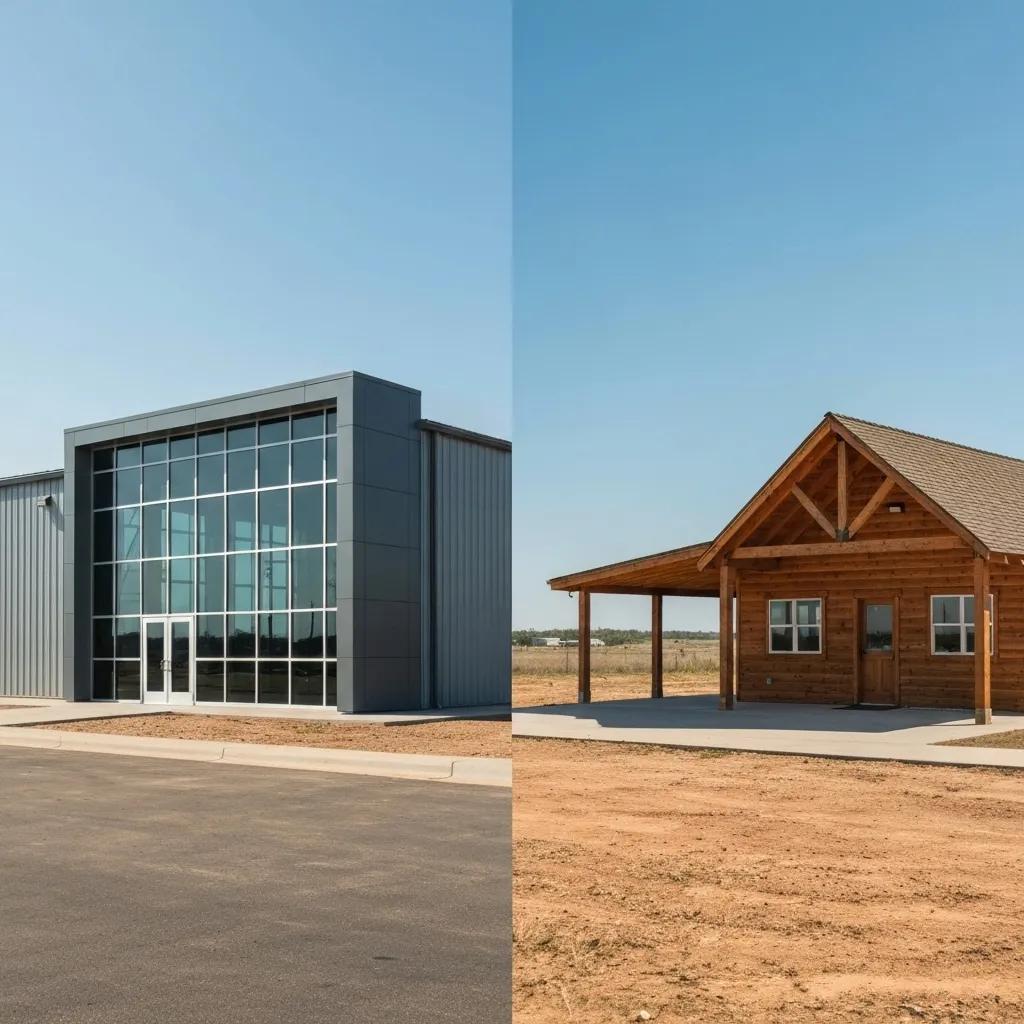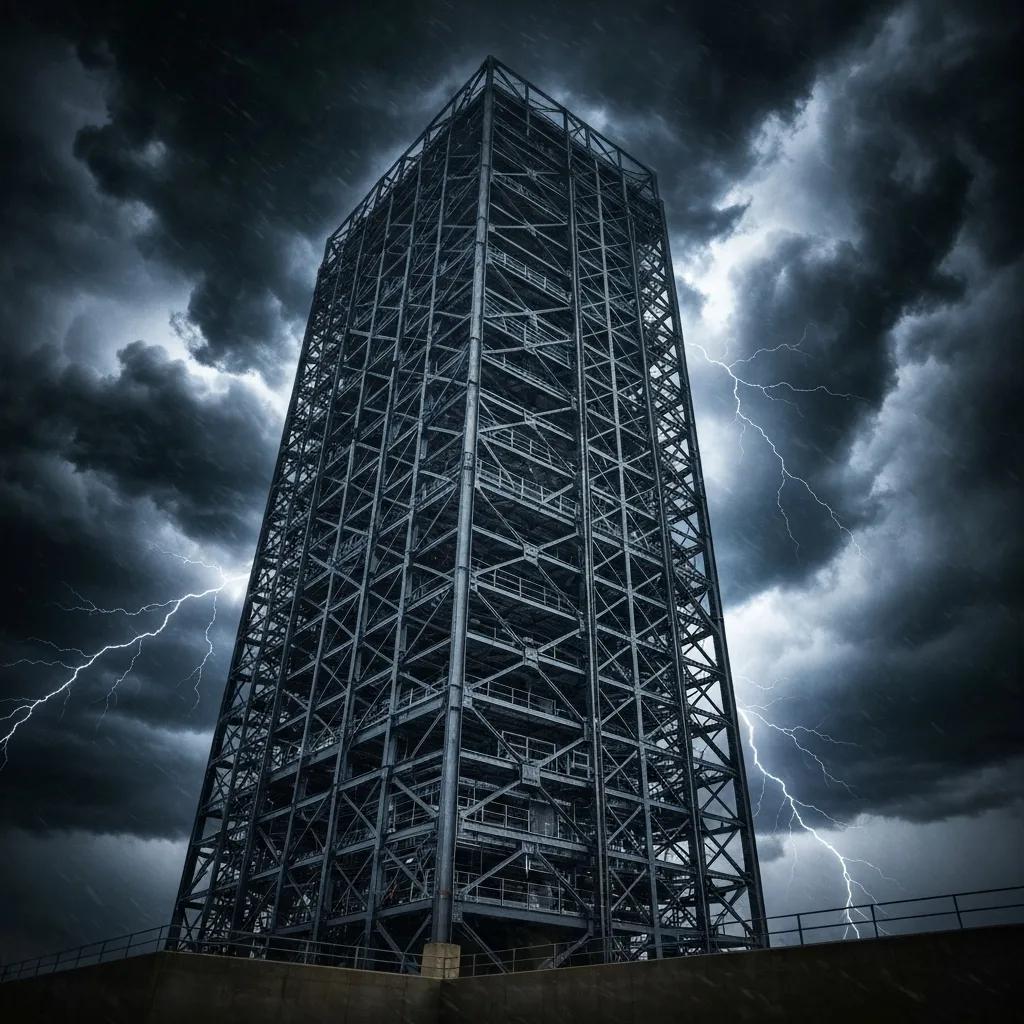
Steel vs. Wood: Unpacking Long-Term Savings & Maintenance for Oklahoma Businesses
When it comes to construction for Oklahoma businesses, the choice between steel and wood boils down to a smart balance of initial outlay, ongoing operational savings, and how well the structure stands up to our local climate—think tornadoes, moisture, and pesky pests.
This guide dives deep into how steel buildings stack up against traditional wood frames. We’ll break down initial costs, highlight long-term financial wins, assess weather resilience, explore customization possibilities, and look at the overall return on investment. Plus, we’ll tackle the top questions Oklahoma clients have when they’re ready to build their next commercial or residential space.
Here’s what you’ll uncover:
- A clear look at the upfront costs for steel shells, complete steel buildings, and wood-framed structures right here in OKC.
- In-depth details on how steel saves you money over time through less maintenance, lower insurance rates, a longer lifespan, and better energy efficiency.
- An analysis of how each material performs under Oklahoma’s extreme weather—from tornadoes and high winds to fire, pests, and moisture.
- Insights into customization, the speed of prefabrication, meeting building codes, and the wide range of applications for steel.
- Why steel offers a superior return on investment for local businesses and how to get quotes from Oklahoma’s leading metal contractors.
- Straightforward answers to common questions about build speed, durability, upkeep, customization, and financing.
What’s the Initial Investment for Steel vs. Wood Buildings in Oklahoma?
Initial cost means the upfront cash you’ll spend on materials, labor, foundations, and permits. Steel buildings often come with pre-engineered parts, which speeds up assembly but can mean a higher per-pound material cost compared to building with wood on-site. For instance, a basic steel shell might be ready to put together quickly, while wood framing requires cutting and fitting pieces right there on the job.
| Building Type | Average Cost per Sq Ft | Typical Finish Level |
|---|---|---|
| Steel Shell Only | $18–$25 | Bare frame and roof |
| Turnkey Steel Building | $55–$75 | Insulated walls, doors, permits |
| Wood-Framed Commercial Structure | $30–$60 | Framing, sheathing, roofing |
While steel shells can sometimes start at a lower price point than fully finished wood projects, complete steel packages can end up costing more than basic wood-frame budgets. This table shows how selecting the right package impacts how the costs compare in the OKC market.
How Do Steel Building Prices Compare to Wood Per Square Foot in OKC?
For steel shell components, expect prices from $18 to $25 per square foot, with fully assembled turnkey buildings ranging from $55 to $75 per square foot. In comparison, a similar wood-framed build, including framing, sheathing, and roofing, typically runs between $30 and $60 per square foot. Even though turnkey steel comes at a premium, its pre-engineered nature often leads to lower labor costs and less material waste, which helps close the initial investment gap.
What Local Factors Influence Material and Labor Costs in Oklahoma?
Oklahoma’s location near major steel suppliers means lower freight costs for steel coils, while regional lumber mills play a role in wood pricing. Shifts in seasonal demand—like busy summers and slower winters for construction—also affect labor rates. Furthermore, local building codes, especially those for flood zones or specific wind-load requirements, might necessitate heavier gauge steel, slightly increasing material costs compared to standard wood-frame designs.
How Do Foundation and Permit Costs Differ Between Steel and Wood?
Steel buildings typically use reinforced concrete slabs or piers designed to distribute weight evenly. These can sometimes cost 5–10% more than typical wood-frame foundations due to the higher dead loads of steel. Permit fees in Oklahoma City are generally similar for both materials, but projects that require specialized engineering reviews for wind or seismic activity might incur extra costs for structural-engineering stamps, which can slightly favor wood unless a metal contractor includes these compliance services.
What Are the Long-Term Financial Benefits of Choosing Steel Buildings?

Steel buildings offer a range of financial advantages by minimizing maintenance needs, potentially lowering insurance premiums, extending the building’s lifespan, and cutting down on operational expenses. This combination leads to significant savings in the total cost of ownership for Oklahoma businesses over a 20–30 year period.
How Does Steel Reduce Maintenance Expenses Compared to Wood?
- Annual cleaning for roofs and walls versus repainting wood siding every few years.
- No need for termite treatments, unlike wood structures that often require pest-control contracts.
- Eliminates rot and mold issues, avoiding costly structural repairs down the line.
Can Steel Buildings Lower Insurance Premiums for Oklahoma Businesses?
Insurance companies often provide lower premiums for steel due to its non-combustible nature, wind resistance, and immunity to pests. In tornado-prone Oklahoma, steel-framed structures engineered to withstand wind speeds of 140–180 MPH can qualify for property coverage discounts of up to 15–25% compared to untreated wood buildings, which are more vulnerable to fire and hail damage.
How Does Steel’s Longer Lifespan Impact Total Cost of Ownership?
With lifespans often exceeding 50 years—and potentially over a century with proper care—steel buildings defer the need for costly replacement and reduce depreciation. Wood buildings may require major renovations after 20–30 years due to rot, pest damage, or structural wear, making steel a more financially sound long-term asset.
What Energy Efficiency Savings Do Steel Buildings Offer Over Wood?
Insulated steel panels combined with reflective roof coatings can reduce heating and cooling expenses by 20–30% when compared to uninsulated wood-frame structures. Continuous insulation in steel buildings eliminates thermal bridging, a common issue with wood studs, which improves HVAC efficiency and lowers monthly utility bills for warehouses, offices, and retail spaces.
How Do Steel and Wood Buildings Perform in Oklahoma’s Extreme Weather?

Why Are Steel Buildings More Resistant to Tornadoes and High Winds?
Steel frames achieve superior connection strength through bolted or welded joints, engineered to handle uplift and lateral forces exceeding 180 MPH. This robust reinforcement prevents the catastrophic failures often seen in stick-built wood structures during tornado events, offering better protection for equipment and inventory.
How Does Steel Provide Superior Fire and Pest Protection?
Steel’s non-combustible material stops flames from spreading, meeting Class A fire-rating standards and providing crucial safety for commercial operations. Its smooth, impervious surface also prevents termites from nesting and mold from growing, safeguarding structural integrity without the need for chemical treatments.
What Moisture and Rot Issues Affect Wood but Not Steel?
Wood framing absorbs moisture, which can lead to swelling, warping, and fungal decay over time—especially during Oklahoma’s humid spring and fall seasons. Steel components, when properly coated, resist moisture penetration, preventing rot, structural weakening, and the interior mold issues that can compromise wood structures.
What Customization and Construction Advantages Do Steel Buildings Provide?
How Does Prefabrication Speed Up Steel Building Construction in Oklahoma?
Components are cut and drilled at the factory, arriving on-site ready for assembly. This prefabrication process can cut on-site framing time by up to 50%. The reduced labor intensity speeds up project timelines, minimizes delays caused by weather, and lowers overall construction costs compared to traditional stick-built wood framing.
What Commercial and Residential Applications Benefit from Steel’s Versatility?
Steel buildings can accommodate clear spans of up to 300 feet, making them ideal for warehouses, office complexes, agricultural barns, retail showrooms, workshops, and garage facilities. Customizable wall profiles and trim options allow businesses to achieve their desired brand aesthetics or seamlessly blend with surrounding residential areas.
How Do Steel Buildings Comply with Oklahoma Building Codes and Regulations?
Metal Contractors possesses extensive knowledge of Oklahoma’s International Building Code (IBC) requirements, including adaptations for wind, seismic activity, and insulation standards. Pre-engineered drawings, third-party lab testing, and stamped structural calculations streamline the permit approval process and ensure full compliance with codes for both commercial and residential projects.
Why Are Oklahoma Businesses Choosing Steel for Long-Term Value?
What Return on Investment Can Oklahoma Businesses Expect from Steel Buildings?
Typical ROI analyses indicate payback periods of 5–8 years when considering the total cost of ownership—which includes maintenance savings, lower insurance premiums, energy efficiency gains, and deferred replacement costs. After this initial period, the ongoing savings contribute directly to your company’s profitability.
How Do Case Studies Demonstrate Steel’s Savings and Durability in Oklahoma?
A farm in central Oklahoma reported a 40% reduction in maintenance costs over 15 years for its steel-framed barn compared to its previous wood pole barn.
Similarly, a retailer in Tulsa saw its HVAC bills drop by 25% after upgrading to insulated steel panels, demonstrating how real-world projects validate projected savings.
How Can Businesses Get Quotes and Consultations from Local Metal Contractors?
Oklahoma businesses interested in custom steel building solutions can request a free consultation or a detailed quote from experienced local metal contractors. Providing your project dimensions and intended use upfront will help expedite design proposals and ensure budgeting accuracy.
What Are the Most Common Questions About Steel vs. Wood Buildings in Oklahoma?
Is Steel Building Construction Faster Than Wood?
Yes, steel building construction is generally faster because pre-fabricated components arrive ready for assembly, cutting labor hours by up to 50% compared to the on-site cutting, nailing, and fitting of lumber.
How Do Steel Buildings Withstand Oklahoma Tornadoes?
Steel buildings are built to withstand tornadoes through engineered frame connections and reinforced anchor systems designed to resist uplift and lateral forces exceeding 140–180 MPH, ensuring structural integrity during severe storm conditions.
What Maintenance Is Required for Steel Buildings Compared to Wood?
Steel buildings require minimal upkeep—typically just cleaning exterior panels, checking fasteners, and potentially recoating exposed steel every 15–20 years. In contrast, wood structures often need repainting, pest treatments, moisture control, and repairs for rot every 3–7 years.
Can Steel Buildings Be Customized for Specific Business Needs?
Absolutely. Customization options include roof pitches, clear-span widths, insulation levels, exterior colors, mezzanine installations, and integrated office spaces, allowing for tailored solutions for industrial, agricultural, retail, and residential applications.
Are Financing Options Available for Steel Buildings in Oklahoma?
Financing is readily available through equipment leasing companies, SBA loans, and traditional commercial mortgages. Flexible payment plans can accommodate phased construction or turnkey delivery, helping businesses manage cash flow while securing their long-term facilities.
Steel buildings offer measurable savings, superior durability, and design flexibility that outperform wood construction in Oklahoma’s challenging climate. By reducing maintenance cycles, lowering insurance premiums, and extending the asset’s lifespan, steel stands out as a wise investment for companies of all sizes.
Businesses looking for dependable metal fabrication services can connect with local experts to receive personalized quotes, ensuring their next building project delivers maximum value from the start.

